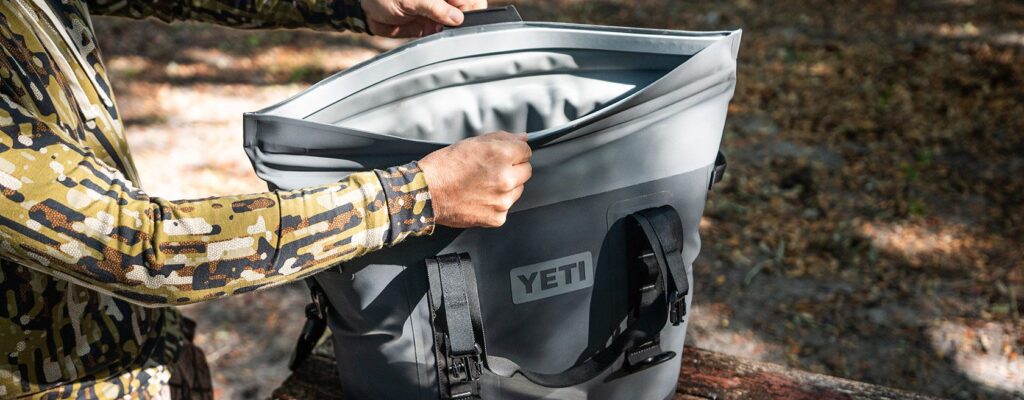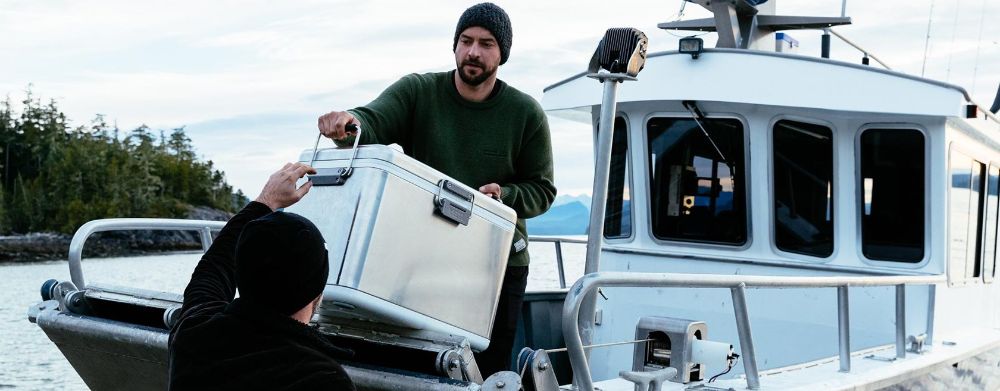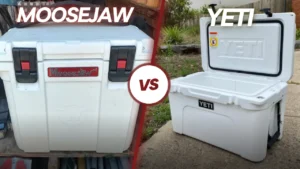Yeti Coolers are well-known for their impressive ice retention. They can keep ice for 3-5+ days fairly easily and the larger sizes can even keep ice for up to 2 weeks!
While they’re not quite the best insulated coolers on the market, they’re still really solid. But what exactly is it about Yeti Coolers that makes them work so well?
Yeti’s hard coolers are insulated with a one-piece, polyethylene roto-molded shell that’s pressure-injected with two to three inches of high-density PermaFrost polyurethane foam insulation.
They’re really effective at keeping your ice cold because they have about 2-3x the amount of insulation of the average cooler and they use a better insulating foam. Also, because the shell is roto-molded they are completely seamless which leads to even less heat loss. Add to that an thick insulated lids (cheaper coolers have hollow lids) and a freezer grade gaskets and Yeti coolers are great at keeping the heat out and the cool in.
Yeti’s soft-sided coolers are insulated with closed-cell foam walls covered by a welded DryHide double-TPU outer shell. Closed-cell foam is one of the most effective soft materials at preventing heat transfer and the DryHide shell minimizes penetration from UV rays.
Yeti V series coolers are dual-wall vacuum-insulated, which is one of the most effective types of insulation — up to 12 times more effective than foam. Plus they have a foam layer as well. Making them one of (if not THE) best insulating cooler on the market.
When it comes to coolers, ice retention is my top priority — if my cooler can’t keep my drinks cold, what’s the point?
Because Yeti Coolers are so well insulated, they’re usually the first cooler I pull off the shelf when it’s time to hit the beach or campground.
How Are Yeti’s Hard Coolers Insulated?

Yeti’s hard coolers are made with a process called rotational molding, or roto-molding, where polyethylene plastic is melted, poured into a mold, and rotated as it cools and hardens.
The result is a solid, one-piece shell with a hollow core that has no cracks or seams.
Then, two to three inches of high-density polyurethane PermaFrost foam is pressure-injected into the shell to drastically slow heat transfer — well over twice the amount of insulation when compared to the average cooler.
Polyurethane foam also has a higher R-rating, or ability to insulated, compared to the polystyrene foam used in the average cooler. Thicker, higher quality foam ultimately leads to much better ice retention.
If that’s not enough, Yeti Coolers have an industrial freezer-style gasket to prevent heat transfer through the lid and raised rubber feet to keep the cooler off the ground.
How Are Yeti’s Soft Coolers Insulated?

Yeti’s soft coolers are insulated with closed-cell rubber foam walls, covered in a DryHide shell.
The closed cell-foam helps to minimize heat transfer, keeping cold air in and hot air out much more effectively than the cheaper, open-cell foams used in many soft-sided coolers.
Yeti also uses thicker foam in their soft sided coolers when compared to cheaper soft sided coolers. This foam isn't as thick or effective as the foam used in their hard sided coolers, but it much lighter in weight and much more malleable making it more comfortable to carry.
The closed-cell foam walls are covered in Yeti’s welded DryHide double-TPU outer shell, which is a super high-density material that prevents the sun’s UV rays from penetrating your cooler and melting your ice.
How Are Yeti V Series Coolers Insulated?

Yeti’s V series coolers take cooler insulation to the next level.
With a vacuum-insulated stainless steel lid and walls, V series coolers take full advantage of one of the absolute best insulators — vacuum sealing.
It’s the same technology used in vacuum-insulated stainless steel bottles, but on a much larger (and therefore much more effective) scale.
But how exactly does a vacuum-insulated cooler work?
Essentially, each wall (and lid) is made of two stainless steel panels, with the air between them removed to create a vacuum. And because air is a conductor, removing it helps to stop heat transfer through conduction.
Vacuum-insulation is between 2 and 12 times more effective than traditional insulation methods.
The V Series cooler also uses a layer of foam in conjunction with the vacuum insulation to create a strong and sturdy cooler that offers some of the best ice retention on the market.



